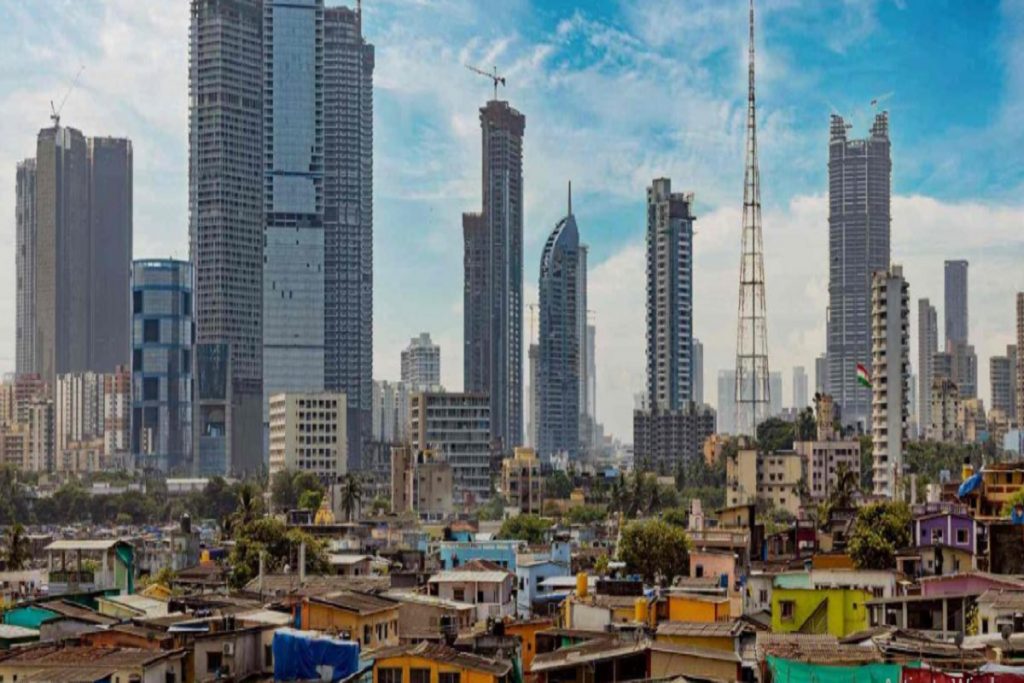– By Dr Amit Kapoor
• Report on Inequality highlights what India is getting right
• Multidimensional Inequality – a holistic approach, move beyond wealth – says, Inequality Report
• “A roadmap for social progress and shared prosperity” – State on Inequality in India Report
As we move to a multidimensional definition of inequality and poverty, it becomes pertinent to look for solutions that reduce structural deprivation where a lack of one kind triggers the household to become deprived in all other ways as well. Thus, corrective measures that we envisage lie at the intersection of social security and economic inclusion with an underlying principle that eventually, the overall household conditions – based on consumption and income – are improved, and they are resilient to sudden economic and life shocks.
India is at the cusp of positive structural changes across economic and socio-economic sectors that have been highlighted in the recently released ‘The State of Inequality in India’ Report prepared by the Institute for Competitiveness. Dr Bibek Debroy, Chairman, EAC-PM, released the report on 18th May 2022. Based on data from different rounds of the Periodic Labour Force Survey (PLFS) and National Family Health Survey (NFHS), remarkable growth is witnessed in the labour market, education and health. The overall conditions of the households have also improved in terms of access to proper sanitation, access to safe drinking water and use of safe cooking fuel. Growth in positive indicators results from enhanced social protection systems that operate at two levels – increased coverage and maximum technology penetration to promote direct beneficiary transfers and plug the leakages in the system. This is particularly true for schemes like Jan Dhan-Aadhar-Mobile Trinity (or JAM Trinity), which emphasises two components- mobile numbers and post office accounts as alternative financial delivery mechanisms to ensure that benefits reach the poor households seamlessly. Some of the significant findings of the reports have stated that the Labour Force Participation Rate (LFPR) has risen from 49.8% in 2017-18 to 53.5% in 2019-20.
This improvement indicates positive structural changes in the labour market, leading to higher participation rates. By the level of education, LFPR for 15 years and above for the educated workforce (secondary and above) stood at 48.8% in 2017-18 and 2018-19. In 2019-20 this increased to 51.5%.The maximum concentration was amongst those with diploma/certificate courses with over 70% participation rate in all three years, indicating the popularity of skill enhancement courses among the working population.In 2017-18, Worker Population Ratio (for 15 years and above) was 46.8%, increasing to 50.9% by 2019- 20.
In the areas of health and education, it is observed that in 2019-20, 97.5% of schools in India had established facilities for safe drinking water on the school premises. This was a substantial increase from 2017-18, with approximately 59% of schools having access to safe drinking water. Additionally, 83.11% of schools and 78.89% of Anganwadi Centres have a tap water supply in toilets/urinals and handwashing. About 95% of schools have functional toilet facilities for students and teachers. Similarly, in 2019-20 83.3% of schools have electricity connections, from only 54.6% of schools with electricity in 2012-13. More important, In 2019-20, the GPI was more than 1 across all levels of education at the all India level.The Gender Parity Index (GPI) based on GER reflects the representation of females in schools in relation to the population of girls in the corresponding age group. A value of 1 shows a favourable picture, while anything less than 1 shows relative under-representation.
In the health sector, under Ayushman Bharat’s ambit, the goal is to achieve universal health coverage by providing care through Health Wellness Centres (AB-HWC) covering child and maternal health services, non-communicable diseases, and free drugs and diagnostic services. As per Rural Health Statistics 2019-20, as of March 2020, there are 155404 Sub Centres (SC), 24918 Primary Health Centres (PHC), and 5183 Community Health Centres (CHC) in rural India14. In comparison, there were 146026 SCs, 23236 PHCs and 3346 CHCs in 2005. Concerning maternal and child health care, improvements have been made in both accessibility and the presence of infrastructure for antenatal and postnatal care. 70% of women have been reported to have had an antenatal check-up in the first trimester, which is an increase from 58.6% in 2015-16 (NFHS 4). There have been constant improvements in demographic indicators like Infant Mortality Rate, Under Five Mortality Rate and Neo-Natal Mortality Rate. It is a direct result of targeted efforts in the health sector.
Social protection systems are envisaged as the pathway to growth, focusing on inclusive development and economic empowerment. In India, social protection has been envisioned as a mechanism to pay special attention to those sections of the society that have not been able to benefit from economic progress. A multidimensional understanding of inequality goes beyond an income or wealth-based measure of inequality to highlight deprivation in everyday life. In the past few years, the assets of education and health have been made accessible to all households to enable social inclusion and cohesion.

